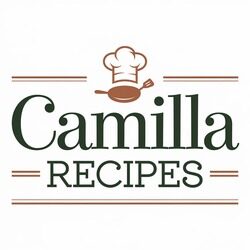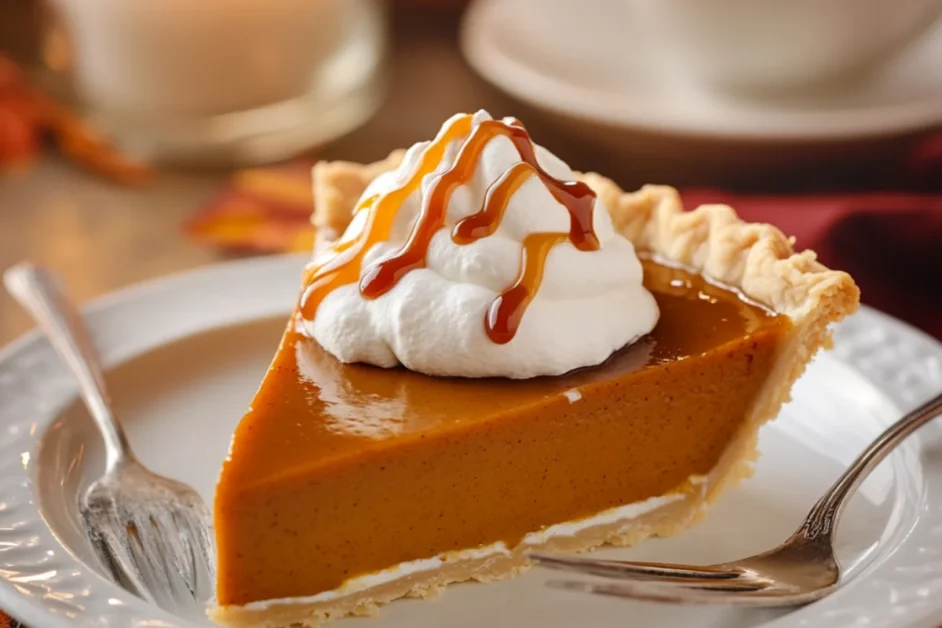Introduction:
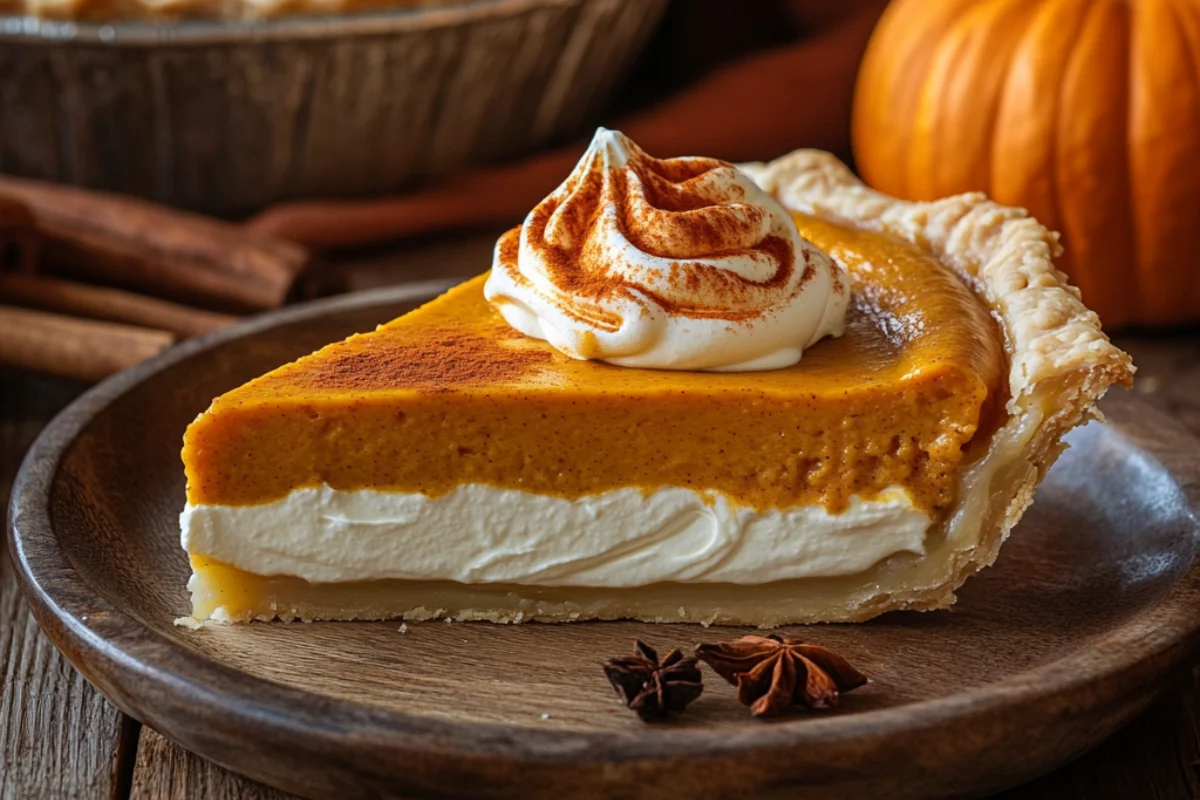
Pumpkin pie is a staple of fall and winter, especially during Thanksgiving and Christmas. This timeless dessert features a rich, spiced pumpkin filling nestled in a flaky crust. However, if you’re looking for a way to elevate this classic treat, adding cream cheese is the perfect solution.
Cream cheese brings a silky smooth texture and a slight tanginess that perfectly balances the warm spices and natural sweetness of pumpkin. This variation creates a pie that is creamier, richer, and more indulgent than the traditional version.
In this article, we’ll explore the history of pumpkin pie, the benefits of adding cream cheese, and essential tips for making the best version of this dessert. Whether you’re a seasoned baker or trying your hand at pie-making for the first time, this guide will help you create a perfect pumpkin pie with cream cheese.
The History of Pumpkin Pie
Pumpkin pie has a long and fascinating history, dating back centuries.
Origins of Pumpkin Pie
Pumpkin, a native North American crop, was an important food source for Indigenous peoples. When European settlers arrived, they adopted the use of pumpkins in their cooking, experimenting with different recipes. Early pumpkin-based dishes included baked or stewed pumpkin sweetened with honey or molasses.
By the 1600s, English settlers began incorporating pumpkin into pastries and pies. However, the first versions were quite different from today’s dessert. Instead of a flaky crust, early pumpkin pies were baked inside hollowed-out pumpkins, filled with milk, spices, and honey.
How Pumpkin Pie Became a Holiday Favorite
Pumpkin pie became associated with Thanksgiving thanks to the harvest season. By the 1800s, cookbooks featured recipes similar to modern pumpkin pie, using spiced pumpkin puree baked in a crust. As Thanksgiving became a national holiday in the United States, pumpkin pie solidified its place on the holiday table.
Variations Over Time
Pumpkin pie has evolved, with regional and personal variations influencing its ingredients. Some recipes incorporate sweetened condensed milk or heavy cream for richness, while others use spices like cinnamon, nutmeg, and cloves for extra warmth.
Adding cream cheese is a more recent adaptation that creates a texture similar to cheesecake while maintaining the beloved pumpkin pie flavor.
Why Add Cream Cheese?
The Role of Cream Cheese in Baking
Cream cheese is a versatile ingredient that adds richness to many baked goods, from cheesecakes to frostings. It has a high-fat content, which contributes to a smooth, creamy texture. In pumpkin pie, cream cheese helps create a filling that is denser, silkier, and slightly tangy, balancing the sweetness.
How Cream Cheese Enhances Texture and Flavor
Traditional pumpkin pie has a custard-like consistency, but adding cream cheese makes it thicker and creamier. The mild tang of cream cheese enhances the natural sweetness of pumpkin without making the pie overly sugary.
Common Cream Cheese-Based Pies
Other pies that use cream cheese include:
- Cheesecake Pies – Cream cheese forms the base of many no-bake cheesecakes.
- Sweet Potato Cream Cheese Pie – A variation of pumpkin pie using sweet potatoes.
- Cream Cheese Swirl Pumpkin Pie – A marbled version where cream cheese is swirled into the pumpkin filling.
Pumpkin pie with cream cheese combines the best of both worlds—the beloved spiced pumpkin flavor with the indulgent creaminess of cheesecake.
Essential Ingredients for Pumpkin Pie with Cream Cheese
Pumpkin Puree vs. Fresh Pumpkin
When making pumpkin pie, you can use either canned pumpkin puree or fresh pumpkin.
- Canned Pumpkin Puree: Convenient, smooth, and consistent in texture.
- Fresh Pumpkin: Offers a more natural flavor but requires extra preparation.
If using fresh pumpkin, opt for sugar pumpkins or pie pumpkins, as they are sweeter and less watery than large carving pumpkins.
The Best Type of Cream Cheese to Use
For the best results, use full-fat cream cheese. It provides the richest texture and flavor. Avoid reduced-fat or whipped versions, as they contain more water, which can affect the consistency of the filling.
Spices and Sweeteners for Perfect Balance
The signature flavor of pumpkin pie comes from a blend of spices and sweeteners:
- Spices: Cinnamon, nutmeg, cloves, and ginger add warmth and depth.
- Sweeteners: Brown sugar enhances caramel-like flavors, while maple syrup or honey adds a natural sweetness.
A well-balanced combination of these elements ensures a deep, comforting flavor in every bite.
Choosing the Right Pie Crust
A great pumpkin pie starts with a delicious, well-made crust.
- Homemade Crust: If you enjoy baking from scratch, a buttery, flaky crust adds a homemade touch.
- Store-Bought Crust: A convenient option that saves time while still delivering great results.
- Gluten-Free/Keto Crust: Almond flour or coconut flour crusts work well for dietary restrictions.
For a creamy pie filling, a blind-baked crust helps prevent sogginess.
Selecting the Best Pumpkin
If you prefer using fresh pumpkin, follow these tips:
- Choose Small Sugar Pumpkins: They have a sweeter, smoother texture.
- Avoid Large Carving Pumpkins: These are more fibrous and watery.
- How to Make Fresh Pumpkin Puree: Roast pumpkin pieces in the oven until tender, then puree in a blender until smooth.
While fresh pumpkin offers a more natural taste, canned pumpkin is equally delicious and much easier to work with.
Sweeteners and Flavor Enhancers
Choosing the right sweetener affects the pie’s taste and texture:
- Brown Sugar vs. White Sugar: Brown sugar provides a deeper, molasses-like sweetness.
- Maple Syrup or Honey: Adds a more complex flavor profile with hints of caramel.
- Spices: A mix of cinnamon, nutmeg, cloves, and ginger ensures a perfectly spiced pie.
For the best flavor, let the spices blend into the filling for at least 15 minutes before baking.
Dairy and Non-Dairy Alternatives
If you need a dairy-free option, there are several substitutions:
- Vegan Cream Cheese: Made from cashews or soy, it mimics the texture of dairy cream cheese.
- Greek Yogurt or Mascarpone: Adds creaminess while slightly altering the flavor.
- Coconut Cream or Almond Milk: Helps adjust consistency without affecting the texture too much.
These alternatives ensure that everyone can enjoy a rich and creamy pumpkin pie.
Tools and Equipment Needed
To make the best pumpkin pie, gather the right tools:
- Mixing Bowls – For combining ingredients smoothly.
- Whisks & Spatulas – Helps mix the filling without overworking it.
- Pie Dish – A 9-inch glass or ceramic dish works best.
- Baking Sheet – Placing the pie dish on a baking sheet helps with even baking.
Proper equipment ensures a smooth baking process and even results.
Prepping Your Kitchen for Baking
Before you begin, take these steps:
- Set Up Ingredients in Advance: Measure everything before starting.
- Preheat the Oven Properly: Baking at the right temperature (350-375°F) prevents undercooking.
- Avoid Common Mistakes: Overmixing can cause cracks, and not blind-baking the crust can lead to a soggy bottom.
With proper preparation, your pumpkin pie with cream cheese will turn out perfectly every time.
How to Make the Perfect Pumpkin Pie with Cream Cheese
Making a pumpkin pie with cream cheese is easier than you might think, but there are a few key techniques to get the best texture and flavor. From the silky smooth cream cheese layer to the perfectly spiced pumpkin filling, this guide will walk you through each step to ensure a flawless pie.
Whether you’re a beginner or an experienced baker, following these tips will help you create a creamy, rich, and beautifully spiced dessert that will impress your family and friends.
Making the Cream Cheese Layer
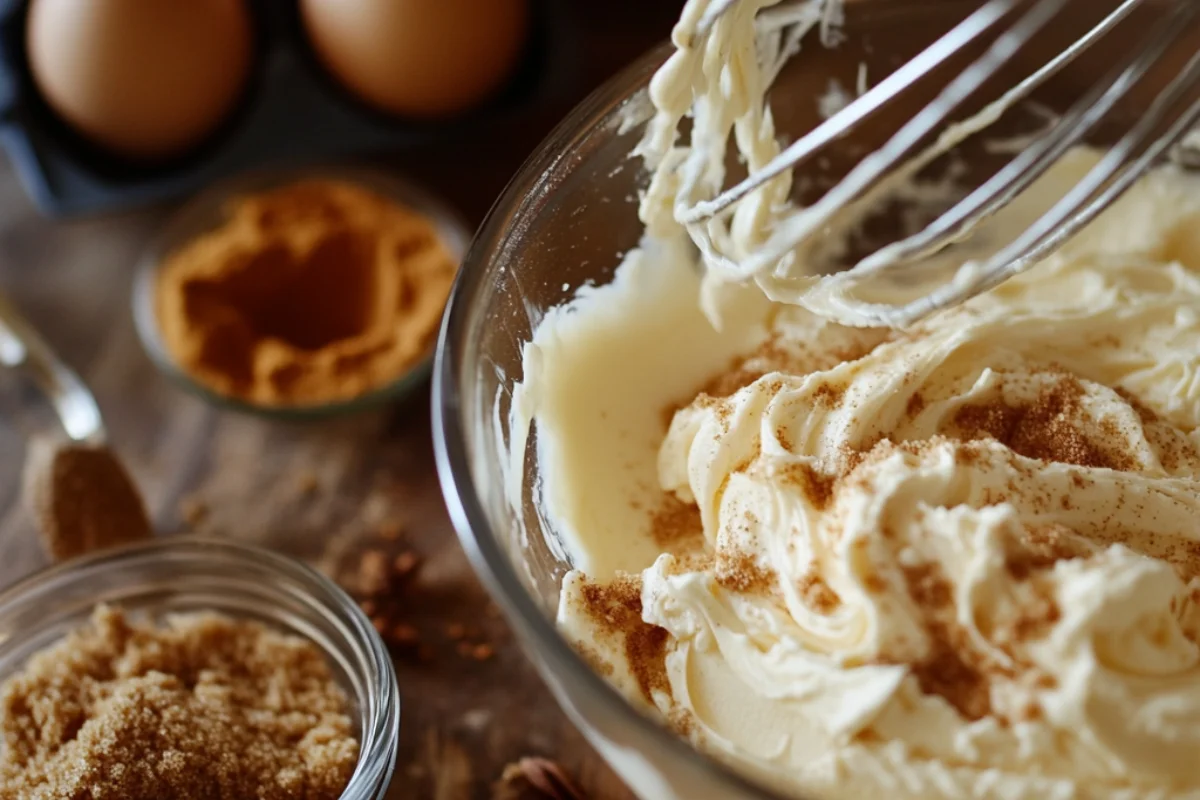
A smooth and creamy cream cheese layer is essential for adding richness to your pumpkin pie. Here’s how to do it properly.
How to Soften Cream Cheese Properly
Softening cream cheese correctly prevents lumps in your mixture. You have three options:
- Room Temperature Method – Leave cream cheese on the counter for 30-60 minutes before using.
- Microwave Method – Heat in 10-second intervals until just soft.
- Water Bath Method – Place the sealed package in warm water for 10-15 minutes.
Whipping vs. Blending
- Whipping: Creates a lighter, airier texture. This works well if you want a fluffier cream cheese layer.
- Blending: Ensures a dense, rich, and smooth consistency—ideal for a cheesecake-like texture.
Incorporating Sweeteners and Vanilla
For a balanced cream cheese layer, mix in:
- Powdered sugar – Dissolves easily for a smooth texture.
- Vanilla extract – Enhances flavor.
- Egg yolk (optional) – Helps with structure if you want a firmer layer.
Once combined, set the cream cheese mixture aside while preparing the pumpkin filling.
Preparing the Pumpkin Filling
The pumpkin filling is the heart of the pie, and it’s important to get the right consistency and flavor balance.
Properly Mixing the Pumpkin with Spices
To achieve a rich, deep flavor, mix:
- Pumpkin puree – Use canned puree for consistency or fresh homemade puree for a more natural taste.
- Brown sugar or maple syrup – Adds depth of sweetness.
- Cinnamon, nutmeg, cloves, and ginger – The essential pumpkin pie spices.
- Eggs – Helps the filling set properly.
- Heavy cream or evaporated milk – Ensures a creamy, smooth texture.
Achieving the Right Consistency
- The filling should be thick but pourable.
- Avoid overmixing to prevent too much air, which can cause cracks during baking.
- Let the filling rest for 5-10 minutes to allow the flavors to meld.
Avoiding Cracks and Sinking
- Bake at a moderate temperature (350°F-375°F) to prevent the filling from overcooking too quickly.
- Do not overbake—the center should still have a slight jiggle.
- Let it cool gradually to avoid sudden sinking.
Assembling the Pie Layers
How you layer the cream cheese and pumpkin mixtures can impact the final texture and appearance.
Layering the Cream Cheese and Pumpkin Mixtures
- Traditional Layered Pie: Spread the cream cheese mixture evenly over the crust, then gently pour the pumpkin filling on top.
- Swirled Pie: Dollop spoonfuls of the cream cheese mixture onto the pumpkin filling, then swirl with a knife for a marbled effect.
Preventing Overflow and Uneven Baking
- Do not fill the pie dish to the very top—leave about ¼ inch of space.
- Use a deep-dish pie crust to accommodate both layers.
- Tap the pie dish gently on the counter to remove air bubbles before baking.
Baking Tips and Tricks
The Ideal Baking Temperature
- Bake at 350°F-375°F for an even cook.
- Avoid temperatures above 400°F, as they can cause the pie to puff up and crack.
How to Prevent a Soggy Crust
- Blind bake the crust before adding the filling.
- Brush the crust with egg wash before filling to create a moisture barrier.
- Use a metal pie pan for better heat conduction.
When to Cover the Pie with Foil
- If the crust starts to brown too quickly, cover the edges with foil.
- If the filling looks done but still jiggles too much, tent the whole pie with foil to prevent overbrowning.
How to Tell When Your Pie is Done
The Jiggle Test
- The center of the pie should still have a slight jiggle when shaken.
- If the entire pie moves like a liquid, it needs more time.
Using a Knife or Toothpick to Check Doneness
- Insert a knife or toothpick about an inch from the center—if it comes out clean, the pie is done.
- Avoid poking the very center, as it will continue to set while cooling.
Why Cooling is Essential
- A hot pie is too soft to slice—let it cool at room temperature for at least 2 hours.
- Rapid cooling (like placing it in the fridge immediately) can cause cracks.
Cooling and Setting the Pie
Proper Cooling Techniques
- Let the pie cool at room temperature for at least 2 hours.
- Avoid placing it in the fridge too soon—it needs time to set properly.
Refrigeration vs. Room Temperature
- If serving within a few hours, leave it at room temperature.
- For longer storage, refrigerate for at least 4 hours before serving.
How Long to Chill Before Serving
- For the best texture, chill for 6-12 hours.
- Chilling overnight enhances the flavor.Serving Suggestions
Best Toppings
- Whipped Cream – Classic and light.
- Caramel Drizzle – Adds a rich, buttery contrast.
- Chopped Nuts – Pecans or walnuts add crunch.
Pairing with Coffee, Tea, or Wine
- Coffee: A warm espresso or pumpkin spice latte.
- Tea: Chai tea complements the spices.
- Wine: A sweet dessert wine or spiced mulled wine.
Creative Plating Ideas
- Drizzle chocolate or caramel on the plate before serving.
- Garnish with cinnamon sticks or star anise for a festive touch.
Storing and Freezing Pumpkin Pie
How to Keep It Fresh Longer
- Store in the refrigerator for up to 4 days, covered loosely with plastic wrap.
Freezing and Reheating Tips
- Wrap the pie tightly in plastic wrap and foil before freezing.
- Freeze for up to 2 months.
- Thaw overnight in the fridge before serving.
Avoiding Sogginess When Thawing
- Do not microwave to thaw—let it come to room temperature naturally.
- Reheat slices in the oven at 300°F for 10-15 minutes for the best texture.
Common Mistakes and How to Fix Them
Why the Pie Cracks and How to Prevent It
- Overbaking is the most common cause—remove when slightly jiggly.
- Cool slowly to prevent sudden contraction.
Fixing a Runny or Overbaked Filling
- If runny, bake 5-10 more minutes at a lower temperature.
- If overbaked, serve with extra whipped cream to mask dryness.
Salvaging a Broken Crust
- Press cracks together before baking.
- Use extra crust crumbs to patch holes.
Variations of Pumpkin Pie with Cream Cheese
Pumpkin pie with cream cheese is a delicious twist on a classic dessert, but there are plenty of ways to modify the recipe to suit different preferences and dietary needs. Whether you’re looking for mini versions, no-bake alternatives, keto-friendly options, or vegan variations, this guide will walk you through creative ways to customize your pumpkin pie while maintaining that rich, spiced flavor.
Mini Cheesecake Pumpkin Pies
If you love the idea of pumpkin pie with cream cheese but want something bite-sized and portable, mini cheesecake pumpkin pies are the perfect option.
How to Make Individual Servings
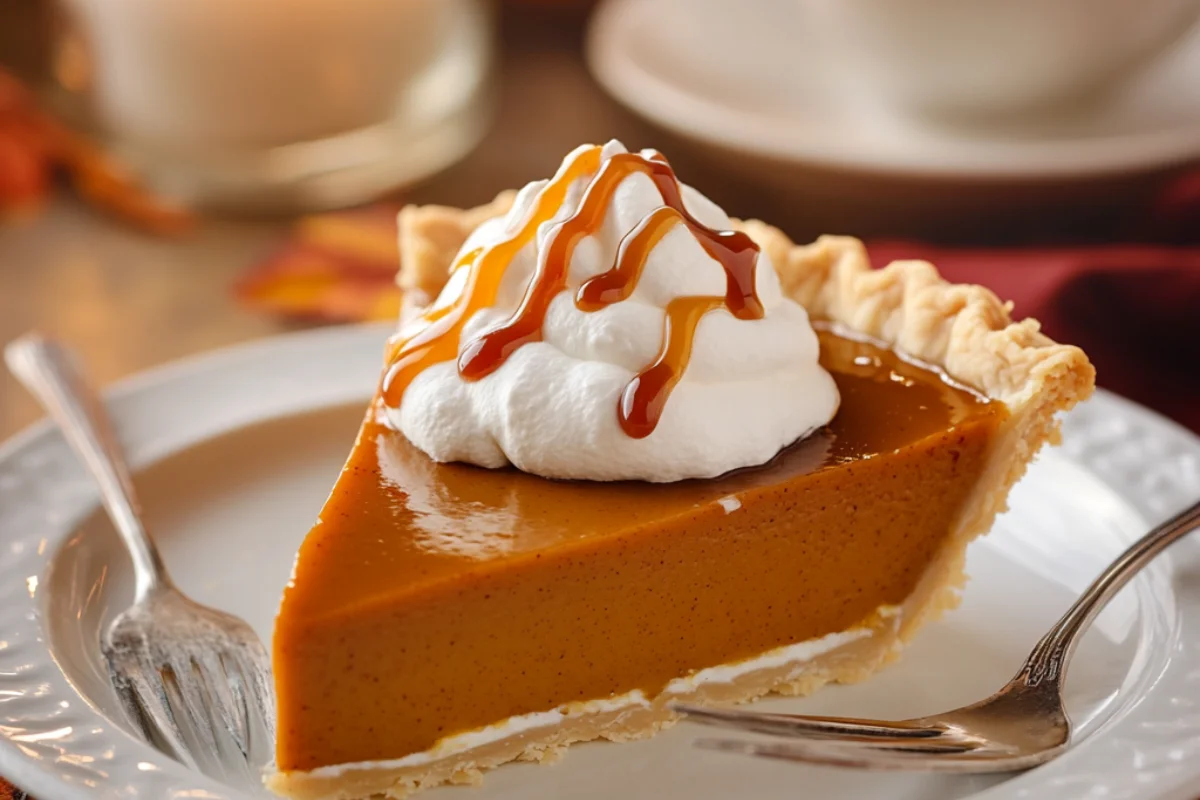
- Use a muffin tin or mini tart pans to create small portions.
- Line each cup with a crust, pressing it firmly into place.
- Fill with alternating layers of cream cheese and pumpkin filling.
- Bake at a slightly lower temperature (325°F) to prevent overbaking.
Best Crust Options for Mini Pies
- Graham cracker crust – Easy and no need to roll out.
- Traditional pie crust – For a classic texture.
- Oreo crust – For a chocolate-pumpkin flavor contrast.
Baking Time Adjustments
- Mini pies bake faster than a full-sized pie. Reduce baking time to 15-20 minutes at 325°F.
- Watch for the jiggle test—mini pies should still be slightly wobbly in the center when removed from the oven.
No-Bake Pumpkin Pie with Cream Cheese
If you’re short on time or prefer a no-bake option, this version delivers all the flavor without the need for an oven.
Ingredients for a No-Bake Version
- Cream cheese – For the signature creamy texture.
- Pumpkin puree – Provides the rich pumpkin flavor.
- Sweetened condensed milk or heavy cream – Helps with consistency.
- Gelatin or instant pudding mix – Gives the pie structure without baking.
- Graham cracker or cookie crust – A sturdy base that requires no baking.
Using Gelatin for Structure
- Dissolve unflavored gelatin in warm milk before adding to the filling.
- Mix it well to prevent lumps.
- Let the mixture sit for 5-10 minutes before pouring into the crust.
Ideal Chilling Time
- Refrigerate for at least 4-6 hours before serving.
- For the best texture, chill overnight.
Healthy and Low-Calorie Alternatives
Looking to enjoy pumpkin pie without the guilt? Here’s how to make a healthier version while keeping the flavor intact.
Using Low-Fat Cream Cheese
- Swap full-fat cream cheese for Neufchâtel cheese or a low-fat cream cheese alternative.
- Keep in mind that lower-fat versions might result in a slightly softer texture.
Sugar Substitutes for a Healthier Pie
- Stevia or monk fruit sweetener – Zero-calorie natural options.
- Coconut sugar – Lower glycemic index than white sugar.
- Maple syrup or honey – Natural sweeteners with added depth of flavor.
Reducing Calories Without Sacrificing Flavor
- Use Greek yogurt instead of heavy cream for added protein and fewer calories.
- Substitute almond flour or oat flour for a lighter crust.
- Opt for egg whites instead of whole eggs to cut cholesterol.
Vegan and Dairy-Free Pumpkin Pie Options
For a vegan-friendly version, you’ll need to replace dairy and eggs while keeping the pie creamy and delicious.
Vegan Cream Cheese Substitutes
- Cashew cream cheese – Soak cashews overnight, then blend with lemon juice and coconut cream.
- Coconut-based cream cheese – Available in most grocery stores.
- Tofu-based cream cheese – Great for a denser texture.
Plant-Based Milk Alternatives
- Almond milk – Light and slightly nutty.
- Coconut milk – Richer texture, best for creamier consistency.
- Oat milk – Neutral flavor and good for baking.
Adjusting the Texture and Taste
- Use cornstarch or arrowroot powder to help thicken the filling.
- Let the pie cool completely before slicing, as vegan fillings need extra time to set.
Nutritional Information & Benefits
Pumpkin pie can be surprisingly nutritious, thanks to its main ingredient: pumpkin!
Calories, Carbs, and Fats Per Slice
A standard slice of pumpkin pie with cream cheese (1/8 of a 9-inch pie) contains:
- Calories: 280-350 (depending on sugar and cream cheese used)
- Carbs: 30-40g
- Fat: 15-20g
- Protein: 5-7g
Health Benefits of Pumpkin
- High in Vitamin A – Supports eye health.
- Rich in fiber – Aids digestion.
- Packed with antioxidants – Helps fight inflammation.
Balancing Indulgence with Nutrition
- Enjoy in moderation, but balance with healthy meals before or after.
- Pair with protein or fiber-rich sides to prevent sugar spikes.
Perfect Drinks to Pair with Pumpkin Pie
Coffee and Pumpkin Spice Latte
- A bold espresso or pumpkin spice latte enhances the warm spices of the pie.
- For a twist, try a maple pecan latte or a chai tea latte.
Wine and Dessert Liqueurs
- Riesling or Moscato – Light, sweet wines complement the pumpkin flavor.
- Baileys Pumpkin Spice or Kahlúa – Creamy liqueurs that enhance the dessert experience.
Non-Alcoholic Pairings
- Apple cider – Warm or chilled, it’s the perfect autumn pairing.
- Vanilla almond milk – A light, creamy option.
Frequently Asked Questions
Can I Make It Ahead of Time?
Yes! Pumpkin pie actually tastes better the next day. Make it up to 2 days in advance and refrigerate.
How Do I Prevent a Cracked Pie?
- Do not overbake—remove when slightly jiggly.
- Cool gradually at room temperature.
- Avoid overmixing the filling, which introduces air bubbles.
Can I Use Fresh Pumpkin Instead of Canned?
Yes! Roast sugar pumpkins, puree the flesh, and strain out excess liquid for a smooth filling.
Fun Facts About Pumpkin Pie
Pumpkin Pie in American History
- The first pumpkin pies were made by baking pumpkins whole with milk and spices inside.
How Thanksgiving Made It Famous
- Pumpkin pie became a Thanksgiving tradition after Abraham Lincoln declared it a national holiday.
Unique Pumpkin Pie Traditions Around the World
- Japan: Uses kabocha squash in pumpkin-flavored sweets.
- France: Pumpkin flan with caramel sauce is a popular alternative.
- Brazil: Pumpkin and coconut pie is a common dessert.
Conclusion and Final Tips
Best Tips for a Flawless Pumpkin Pie
- Use room temperature ingredients for a smoother filling.
- Let the pie cool completely before slicing.
- Experiment with flavors—try adding chocolate, caramel, or nuts for variety.
Encouraging Experimentation
- Try different crusts, toppings, and mix-ins to find your perfect pie.
Inviting Readers to Share Their Experiences
Have you tried making pumpkin pie with cream cheese? Share your results and variations!
